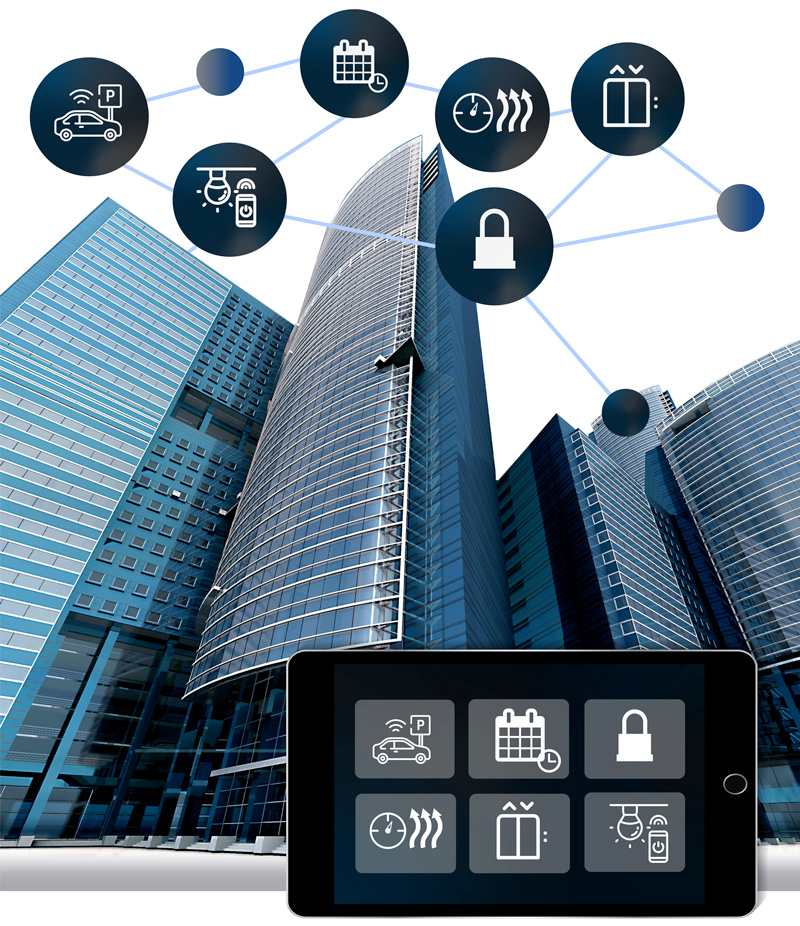3 Key Benefits of Utilising a Smart Workflow
/0 Comments/in Blog Post /by Magnus Thurley
3 Key Benefits of Utilising a Smart Workflow
Although many businesses understand the value of smart building technology, they might find their productivity and efficiency has not increased to their desired levels after they adopt it. Reviewing the processes of building stakeholders with the goal of enhancing their daily workflows, reducing bottlenecks and maximising infrastructure is the key to achieving optimised building and end-user operations.
Previously we covered the growing pressure for building owners to enhance their digital stakeholder experience, providing insight into the need for employing a smart workflow to leverage an infrastructure’s value. In this article, we will analyse the main benefits in more detail. Below are some key examples of the advantages of employing a smart workflow.
1. Enhanced Occupant Experience
By implementing workflows connecting occupants with the building systems, the occupants become embedded with the property, becoming more efficient in the workplace and loyal to their tenancy.
An example of increased end-user interoperability is a patient who wants to make a booking at their hospital. Using a smart workflow, the patient can make a booking online, which will trigger a visit request via an integration platform at the building, it can then send the patient an email asking ‘do you need parking?’ if the answer is yes, the system can reserve a park and provide secure access via the patient’s licence plate.
The workflow has mapped the entire user journey to create a seamless experience. This process can be tailored to any industry. Other examples that improve the tenant experience:
Improved Amenities – Workflows give better interoperability for occupants to point out faulty amenities to be fixed faster.
Smart lighting systems – When tenants swipe their cards to enter the building, that can trigger the lift to take them to their floor, eliminating the need to manually enter the floor number. If that tenant is the first person in the building, the card swipe at the entrance can also trigger the lighting and air-conditioning on their floor, reducing power when the floor isn’t occupied and reducing the labour of manually setting up the lights.
2. Reduced Operational and Maintenance Costs
Workflows provide toolkits for facility managers to monitor a building’s energy consumption. An effective workflow delivers visualisation for various building functionalities and reporting capabilities for operators to identify and implement fine-tuning strategies. This advanced visualisation is mapped out via an integration platform with constant back-and-forth data transferred between building assets for real-time results.
Providing tenants with the ability to access the building’s network and notify operators of faulty equipment also means any issues with the building’s assets can be fixed before they become too expensive.
3. Reduced Labour Resources
Say an organisation has hired a new employee, traditionally, one of the employee representatives would have to send an email to management with the new employee’s details, then the manager would have to pass the details onto security, and security would have to manually enter the details and notify the manager until it comes full circle back to the employee.
With an effective workflow in place, the new employee can use the integration platform from the building to enter their details and automatically sync them into the building’s security systems and database. If the new employee is starting at a global company, they can do a bulk upload onto all the building systems around the world.
This reduces the need for multiple handling of information and saves time for security and management to focus on other tasks. The same workflow can work in reverse when staff leave a business. This way there are no forgotten or active access cards remaining for staff no longer working in a property.
Contact us to transform your building into a smart building
Operational Intelligence are leaders in technology strategy and innovative design, trusted around the world and backed by over 30 years of experience. We have enabled three Smart Cities, seven 6-Star NABERS rated precincts, sixty-seven 5-Star NABERS rated precincts and over 3,700 smart solutions worldwide.
Contact our team for more information on how you can optimise your building utilising the most advanced smart building technology and solutions.

Disclaimer: The content within is the opinion of the author and engineering team of Operational Intelligence.
Get in Touch with Operational Intelligence
CONTACT US TO START YOUR JOURNEY WITH OPERATIONAL INTELLIGENCE
CONTACT US
MENU
FOLLOW

